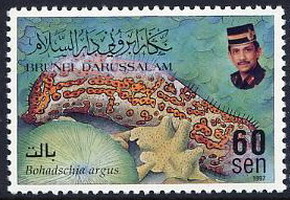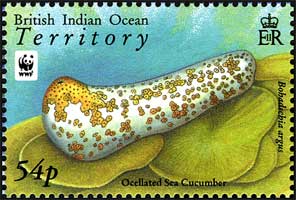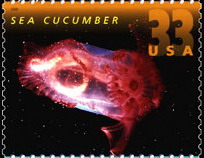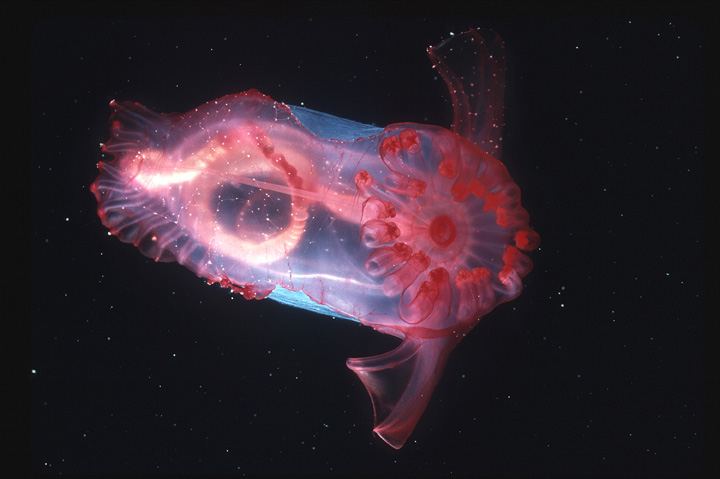

|
БИОЛОГИЯ НА ПОЧТОВЫХ МАРКАХ BIOLOGY ON POSTAGE STAMPS |
|
Vita 00001 → Animalia 00010 → Echinodermata 00113 → Holothuroidea 00178 |
Classis Holothuroidea de Blainville, 1834 = Holothurioidea (Класс Голотурии = Морские кубышки = Морские огурцы) - Sea cucumbers (En) - 00178
Subclassis Aspidochirotacea Grube, 1840
Ordo Aspidochirotida Grube, 1840 (Отряд Щитовиднощупальцевые голотурии)
Familia Holothuriidae Ludwig, 1894 (Семейство Настоящие голотурии)
Genus Bohadschia
Species Bohadschia argus - Leopardfish Sea Cucumber (En) - Ocellated Sea Cucumber (En) http://www.brunet.bn/gov/post/marine.htm
Genus Pearsonothuria Levin in Levin, Kalinin & Stonik, 1984
Species Pearsonothuria graeffei (Semper, 1868) = Bohadschia graeffei (Semper, 1868) = Holothuria graeffei Semper, 1868 - Graeffe's Sea Cucumber (En) - Leopard Sea Cucumber (En)
Familia Stichopodidae Haeckel, 1896 (Семейство Стихоподиды)
Species Stichopus chloronotus - Dark Green Sea Cucumber (En)
Species Thelenota ananas (Jaeger, 1833) - Prickly Red Sea Cucumber (En) - Pineapple Sea Cucumber (En)
Ordo Elasipodida Théel, 1882 (Отряд Боконогие голотурии)
Familia Pelagothuriidae
Species Enypniastes eximia


Sea Cucumber: It's scientific name is Enypniastes eximia, and it can be up to a foot in length. Almost all sea cucumbers (which are in Echinodermata, the same phylum as starfish and sea urchins) are bottom dwellers which lie on or burrow into the sediments and eat mud or sand to get the attached organic material. Enypniastes is one of a small group of swimming sea cucumbers. It also feeds on bottom sediment, which it stuffs into its mouth with the group of tube feet surrounding the mouth. However it is also capable of swimming up above the bottom, by undulation of the cape-like structure around the top of the animal. It is a graceful, if slow, swimmer, but can be found several hundred feet above the bottom. Through the transparent body wall, one can see the intestine and other internal organs. Enypniastes has luminous organs on its skin, which may deter predators. (Larry Madin, Woods Hole Oceanographic Institution) http://www.whoi.edu/page.do?pid=9779&tid=441&cid=4554&ct=61&article=973
Ссылки - Links
Систематика
http://sn2000.taxonomy.nl/Taxonomicon/TaxonTree.aspx?id=41244
Систематика
http://www.biolib.cz/en/taxon/id79880/
Начато: 30.08.2007 Обновлено: 19.09.2007, 20.12.2008, 09.2009